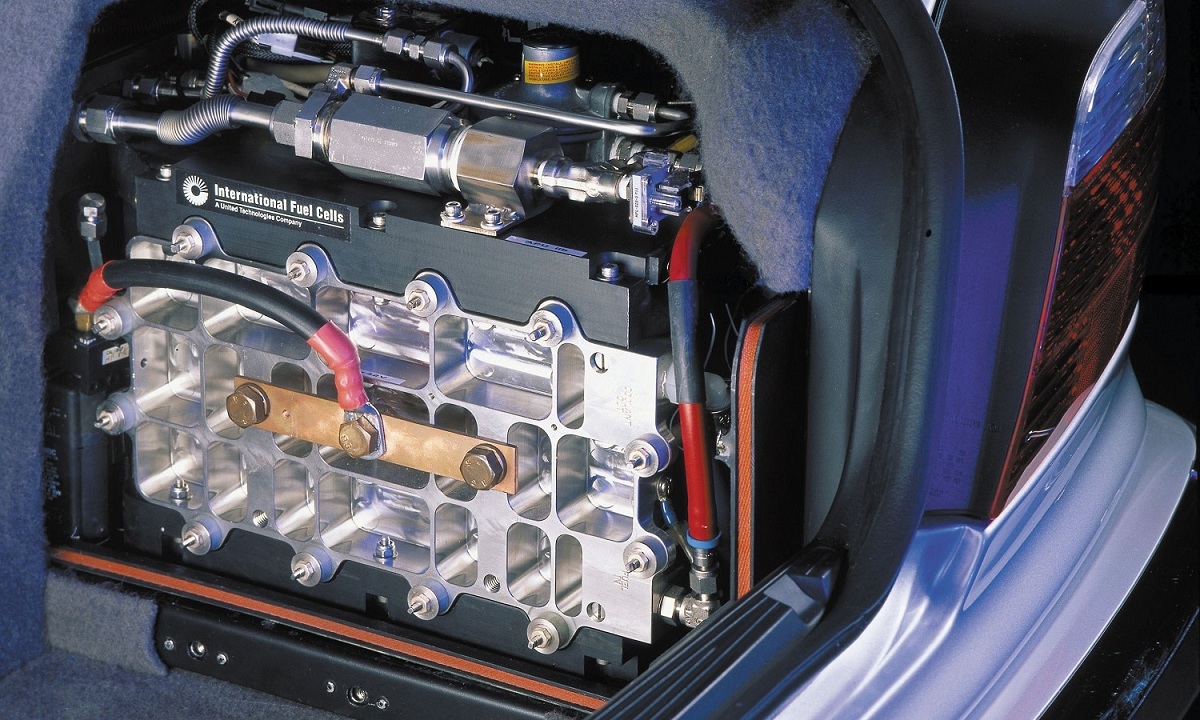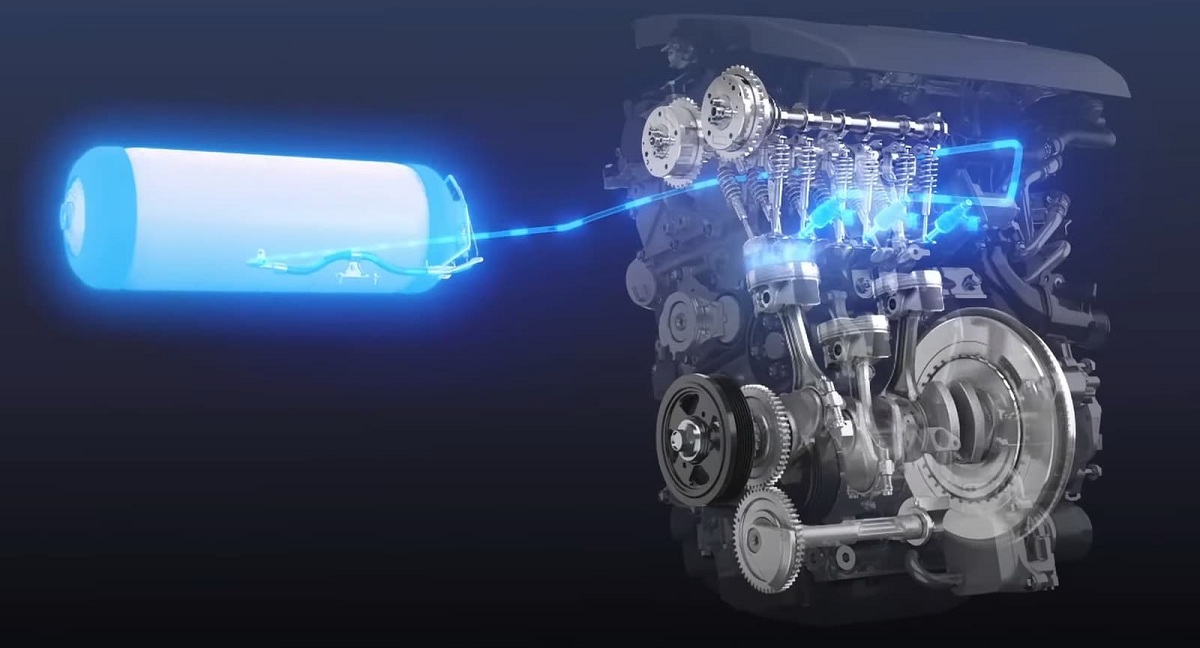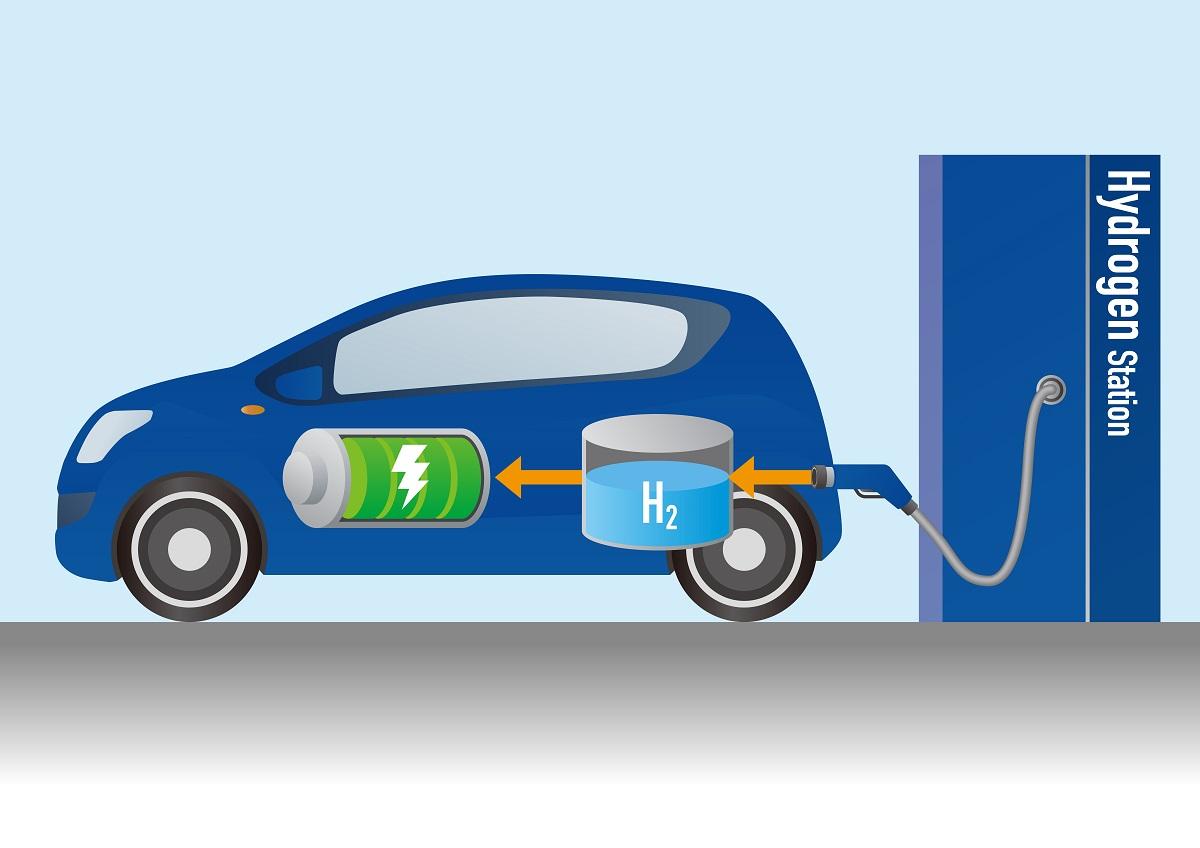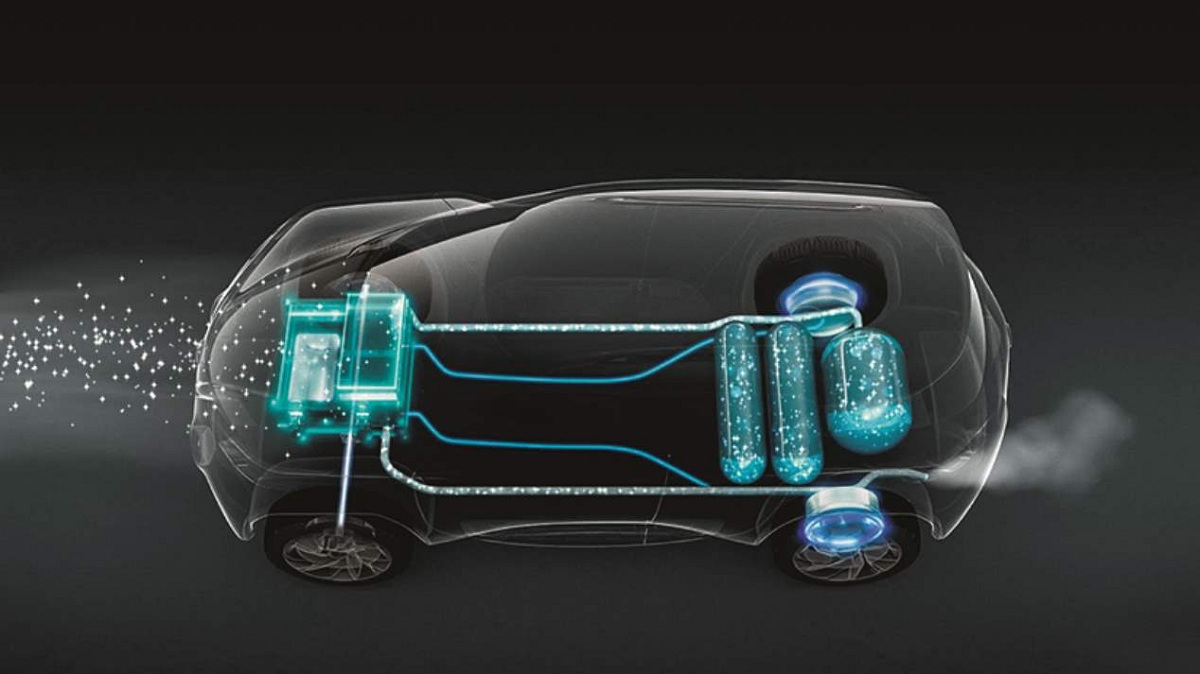
Hydrogen engines continue to be one of the future bets of the automotive industry. Its operation has given it a series of advantages, keeping it afloat despite its failures. To this end, Toyota, BMW, Mazda, Hyundai, Ford and other brands have invested heavily in this technology. Hydrogen-using engines include internal combustion engines and fuel cell conversion engines. Many people don't know how does a hydrogen engine work and their respective advantages and disadvantages.
For this reason, we are going to dedicate this article to telling you how a step-by-step hydrogen engine works, what its characteristics are and its importance for the motor world.
How does a hydrogen combustion engine work?

These engines use hydrogen as gasoline. That is, they burn it in a combustion chamber to create an explosion (kinetic energy and heat). For this reason, conventional gasoline engines can be adapted to burn hydrogen in addition to LPG or CNG.
The operation of this engine is very similar to that of a gasoline engine. Hydrogen is used as fuel and oxygen as oxidant. The chemical reaction is initiated by a spark and a spark plug can produce a spark. Hydrogen has no carbon atoms, so the reaction is that two hydrogen molecules combine with one oxygen molecule, releasing energy and water.
The result of its chemical reaction is simply water vapor. However, hydrogen combustion engines do generate some emissions during their operation. For example, small amounts of NOx from the air and heat from the combustion chamber, or emissions from burning some oil through the piston rings.
As hydrogen is a gas, it is stored in a tank with a pressure of 700 bar. This is 350 to 280 times higher than normal car tire pressure. (2 to 2,5 bar). Although there are also cars that store hydrogen in liquid form at very low temperatures, as shown below.
Hydrogen combustion engines offer some interesting advantages over conventional combustion engines. For example, they can theoretically use very fine mixtures (Lambda close to 2). That is, they can use very little fuel to use all the incoming air and become very efficient.
Example of how a hydrogen combustion engine works
A good example of a hydrogen engine is the BMW 750hl, which came onto the market in 2000. Although it is actually a BMW petrol engine, it is also capable of burning hydrogen.
However, it has several drawbacks: First, it stores hydrogen in liquid form. This requires a very expensive tank made from materials from the aerospace sector to keep its temperature below -250ºC. This can only be achieved within 12 to 14 days, during which time the hydrogen gradually evaporates and is safely released into the atmosphere. The second disadvantage is that by using hydrogen you lose a lot of power and efficiency. The later BMW Hydrogen 7 from 2005 partially solved these problems and increased the hydrogen pressure to 700 bar without keeping it cold.
Another good example is the Aquarius hydrogen engine. A fossil fuel engine developed by an Israeli company suitable for the use of hydrogen. The first functional version was introduced in 2014 and since then a revised and improved version has appeared. According to its developers, it can work without lubricating oil and has a gas exchange system to reduce NOx emissions.
In addition, the hydrogen internal combustion engine is light and has few parts, making it cheap to produce. It can be used as a range extender for electric vehicles or as a generator for the network.
How does a hydrogen fuel cell engine work?

Its full name is a fuel cell converted hydrogen engine. Despite the word "fuel", they do not burn hydrogen. They use it to generate electricity through the reverse process of electrolysis. That's why they carry batteries for chemical reactions, like in a hydrogen combustion engine, where hydrogen is stored in tanks with a pressure of 700 bar.
It's just that instead of feeding it to the motor, it goes through the anode and cathode (like a battery) to the fuel cell. Once there, hydrogen gas (H2) passes through the membrane and breaks it down into two hydrogen ions. Hydrogen and two free electrons. These electrons pass from the anode to the cathode of the battery through an external circuit, creating an electrical current. The hydrogen ions produced combine with oxygen from the air to form water.
For this reason, a hydrogen fuel cell engine is zero emissions, since it does not produce NOx or the gases that are produced when burning oil like an internal combustion engine. The diaphragms used in these engines are made from platinum and are expensive. However, there is work to address this high cost. For example, at the Technical University of Berlin they have developed a ferroalloy that, if put into production, could greatly reduce costs.
Disadvantages of hydrogen engines

- Catalysts used in chemical reactions of hydrogen fuel cell engines are made from expensive materials, such as platinum. At least until it is replaced by a cheaper alternative, like the one mentioned in TU Berlin.
- To obtain hydrogen, it must be done by thermochemical processes of fossil fuels or by electrolysis of water, which requires energy consumption. The main criticism of hydrogen engines, because the electricity can be stored directly in the battery of an electric vehicle for use.
- Once the hydrogen is obtained, must be introduced into a cell or pressure tank. This process also requires additional energy expenditure.
- Hydrogen batteries are expensive to produce and must be very durable to withstand the high pressures with which hydrogen must be stored.
Advantages of hydrogen engines
- Hydrogen batteries are lighter than electric vehicle batteries. That is why its use in heavy transport is being investigated as an alternative to battery electric trucks. To be able to cover great distances, they are very heavy.
- Today, charging hydrogen is faster than charging an electric car battery.
- Unlike battery electric vehicles, hydrogen fuel cell vehicles do not require large batteries. Therefore, it requires less lithium or other materials that may be in short supply. Hydrogen internal combustion engines do not directly require lithium batteries or other similar batteries.
- Fuel cells can extend the life of a car. Unlike batteries, which are expensive to replace due to their size and capacity. The batteries associated with hydrogen engines are smaller and therefore less expensive to replace.
- Compared to fossil fuel engines, hydrogen fuel cell engines use electric motors and are therefore very quiet.
Autonomy

The disadvantage of hydrogen engines is that their tanks or fuel cells must contain hydrogen at very high pressures. Thus, the supply point must also comply with the pressure of 700 bars that it supports.
This requires building a supply infrastructure to be able to refuel this type of vehicle. That said, it has the same issues as pure electric vehicles. However, the refueling operation is much faster than these, since it is the same as an LPG or GLC vehicle.
Cars currently equipped with hydrogen fuel cell engines have a range similar to gasoline. For example, the Toyota Mirai announced 650 km with a full battery, the Hyundai Nexo 756 km and the BMW iX5 Hydrogen 700 km.
Others like the Hopium Machina have announced a range of 1.000 km, although that figure will now have to be confirmed when it happens. In any case, autonomy is not as important as the battery, because refueling is much faster. The thing to keep in mind is the number of fuel points.
They're safe?
Brands have been working on this type of engine for years to improve their efficiency, reduce costs and, of course, make them as safe as those that run on fossil fuels.
In addition, the safety standards required by Europe, the United States and Japan are the guarantee of the safety of hydrogen-powered vehicles. Needless to say, Toyota touts that the Mirai's gas tank is tough enough to be bulletproof.
Will we see a day when all cars run on hydrogen? Time will show everything. It is clear that brands continue to invest and it has some advantages that make it a reasonable alternative to zero emission transport.
I hope that with this information you can learn more about how a hydrogen engine works, its characteristics, advantages and disadvantages.